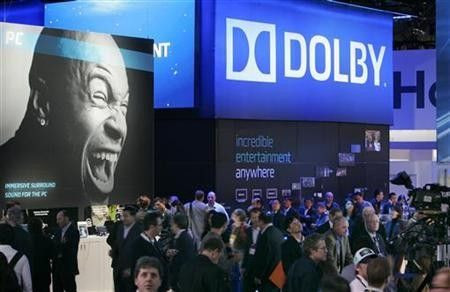Dolby uses extreme sports to hype its booming new sound

When Dolby Laboratories want to show off the latest and greatest in sound and visual technology, you figure they would turn to one of Hollywood's big-budget, state-of-the-art blockbusters.
But that's not the direction the company took on Tuesday night, when Dolby hosted a presentation entitled The Art of Entertainment featuring The Art of Flight' at its San Francisco headquarters.
Instead, Dolby spotlighted an extreme-sports movie about snowboarding, The Art of Flight, which was made with backing from an energy drink company and which went straight to DVD, Blu-Ray and iTunes.
But The Art of Flight, which has been on sale in snowboarding shops since September, is not only an impressive showcase for booming surround sound, but an intriguing case study in new distribution strategies.
The film, shot as a group of extreme snowboarders tackled many of the most dramatic mountains in Alaska, Canada, Chile, Patagonia, Wyoming and Colorado, started by aiming at the typical audience for extreme sports movies, with an eye on expanding beyond that audience.
Our strategy was to go to our core audience first, and the mainstream second, said executive producer Charlie Rosene at the Dolby event.
The audience for action sports, said director Curt Morgan, is a film-based community that watches its stars on regular DVD releases; it's dramatically different from the television-based audience for more mainstream sports audience, and it neither expects nor wants plotlines from the daredevil compilations showcasing its favorites.
But Morgan wanted his film to appeal beyond that crowd, so he stretched the film to twice the usual 40-minute length for snowboarding films, and added enough backstory to entice non-aficionados.
And while The Art of Flight debuted in snowboarding shops in September, early in the annual three-month window during which new videos are released, it also went to iTunes, where at one point it simultaneously topped the documentary, sports and film charts.
At Thanksgiving, the film will debut at Best Buy with a different cover, designed to lure a more mainstream audience.
It's really difficult to reach your core audience and also reach out to a new audience, said Morgan. But that was the goal with this one. And it's been cool to see an action-sports property start to recoup very fast.
Among the financiers on the project is Red Bull Media House, an aggressive arm of the energy drink company. Red Bull, The Art of Flight producer Chad Jackson told TheWrap before the presentation, is functioning like a studio, backing projects and accumulating a large amount of content, most of it aimed at television.
The company, added Morgan, is building an epic distribution platform, and among the content it is currently shopping is a television series based on The Art of Flight and shot simultaneously with the feature.
The next step in mainstreaming the film: a 3D conversion, which Morgan said was in the works and Rosene said was taking place with the help of a very credible partner.
The Dolby connection, incidentally, came about almost by happenstance.
Chad Jackson had connected with Dolby creative director Angus McGilpin, a former athlete and snowboarding enthusiast, on Linked In, and when he and Morgan met McGilpin at the NAB conference, the Dolby exec told them that he'd like to get his company involved in the mixing process.
Morgan was skeptical, because his film only had an $11,000 budget for sound mixing, but McGilpin persuaded the director to bring Dolby on board, and got Skywalker Sound involved as well.
The result is another showcase for the Dolby 7.1 Surround Sound system, which debuted in 2010 with Toy Story 3. Nearly four dozen feature films shot in the format have been released or are scheduled to be released worldwide, including the upcoming movies The Muppets, Mission Impossible: Ghost Protocol and War Horse.
Prodded at the event by McGilpin to talk about what 7.1 had done for his film, Morgan complied, though in the process he made things momentarily awkward for his hosts.
For me, the Dolby partnership was detrimental to the film, he said.
McGilpin interrupted quickly. Instrumental to the film, you mean.
Instrumental? Morgan frowned. Yeah. I mean, it'd be detrimental without the partnership.
© Copyright Thomson Reuters 2024. All rights reserved.




















